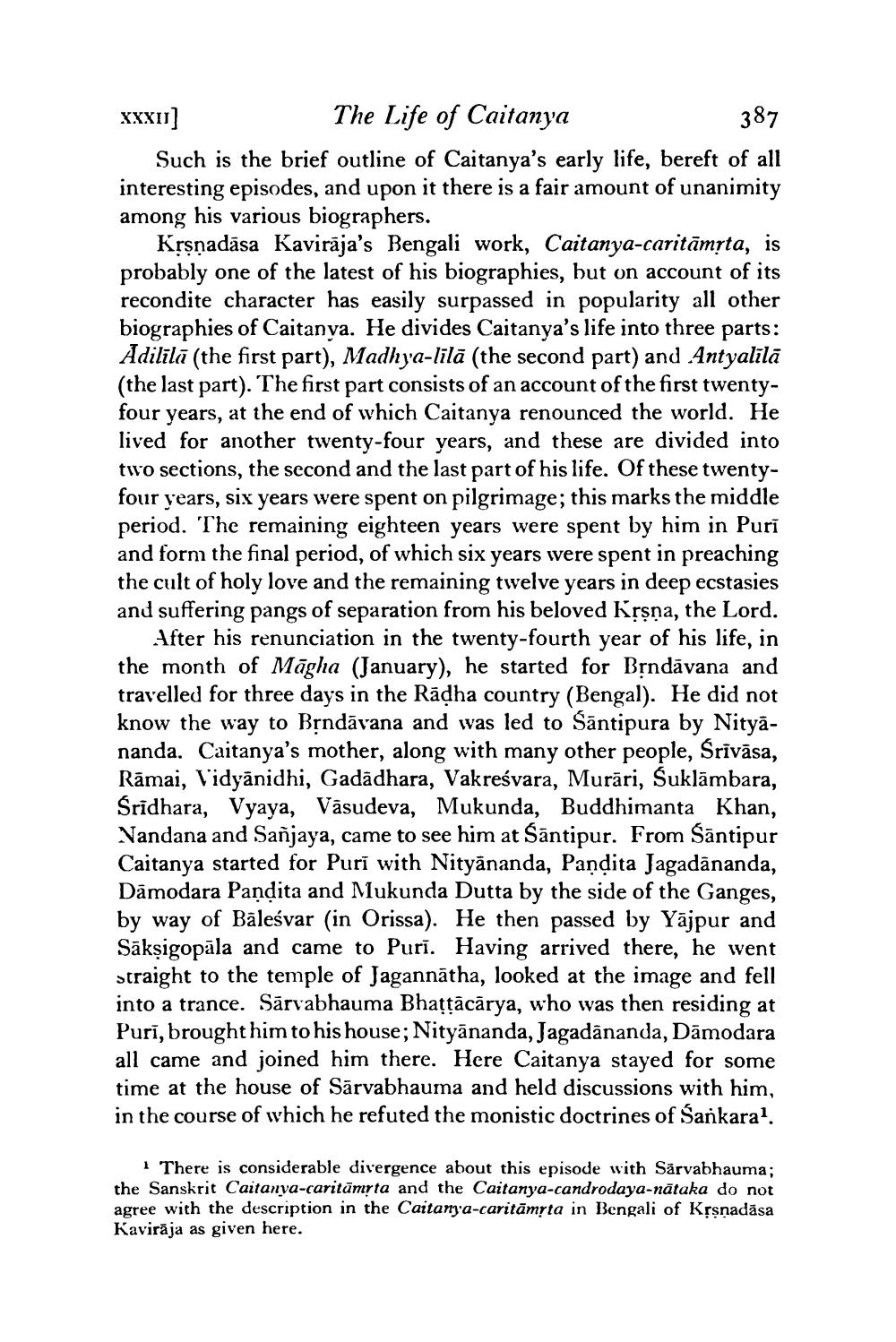________________
387
XXXU]
The Life of Caitanya Such is the brief outline of Caitanya's early life, bereft of all interesting episodes, and upon it there is a fair amount of unanimity among his various biographers.
Krsnadāsa Kavirāja's Bengali work, Caitanya-caritāmịta, is probably one of the latest of his biographies, but on account of its recondite character has easily surpassed in popularity all other biographies of Caitanya. He divides Caitanya's life into three parts: Adilīlā (the first part), Madhya-lilā (the second part) and Antyalīlā (the last part). The first part consists of an account of the first twentyfour years, at the end of which Caitanya renounced the world. He lived for another twenty-four years, and these are divided into two sections, the second and the last part of his life. Of these twentyfour years, six years were spent on pilgrimage; this marks the middle period. The remaining eighteen years were spent by him in Puri and form the final period, of which six years were spent in preaching the cult of holy love and the remaining twelve years in deep ecstasies and suffering pangs of separation from his beloved Krsna, the Lord.
After his renunciation in the twenty-fourth year of his life, in the month of Māgha (January), he started for Bệndāvana and travelled for three days in the Rādha country (Bengal). He did not know the way to Bệndāvana and was led to śāntipura by Nityānanda. Caitanya's mother, along with many other people, Srivāsa, Ramai, Vidyānidhi, Gadādhara, Vakreśvara, Murāri, Suklāmbara, Sridhara, Vyaya, Vāsudeva, Mukunda, Buddhimanta Khan, Nandana and Sanjaya, came to see him at Sāntipur. From Sāntipur Caitanya started for Purī with Nityānanda, Pandita Jagadānanda, Damodara Pandita and Mukunda Dutta by the side of the Ganges, by way of Bāleśvar (in Orissa). He then passed by Yājpur and Sākṣigopāla and came to Puri. Having arrived there, he went straight to the temple of Jagannātha, looked at the image and fell into a trance. Sārvabhauma Bhattācārya, who was then residing at Purī, brought him to his house; Nityānanda, Jagadānanda, Dāmodara all came and joined him there. Here Caitanya stayed for some time at the house of Sārvabhauma and held discussions with him, in the course of which he refuted the monistic doctrines of Sankaral.
1 There is considerable divergence about this episode with Sårvabhauma; the Sanskrit Caitanya-caritāmrta and the Caitanya-candrodaya-nātaka do not agree with the description in the Caitanya-caritāmrta in Bengali of Krsnadāsa Kavirāja as given here.




